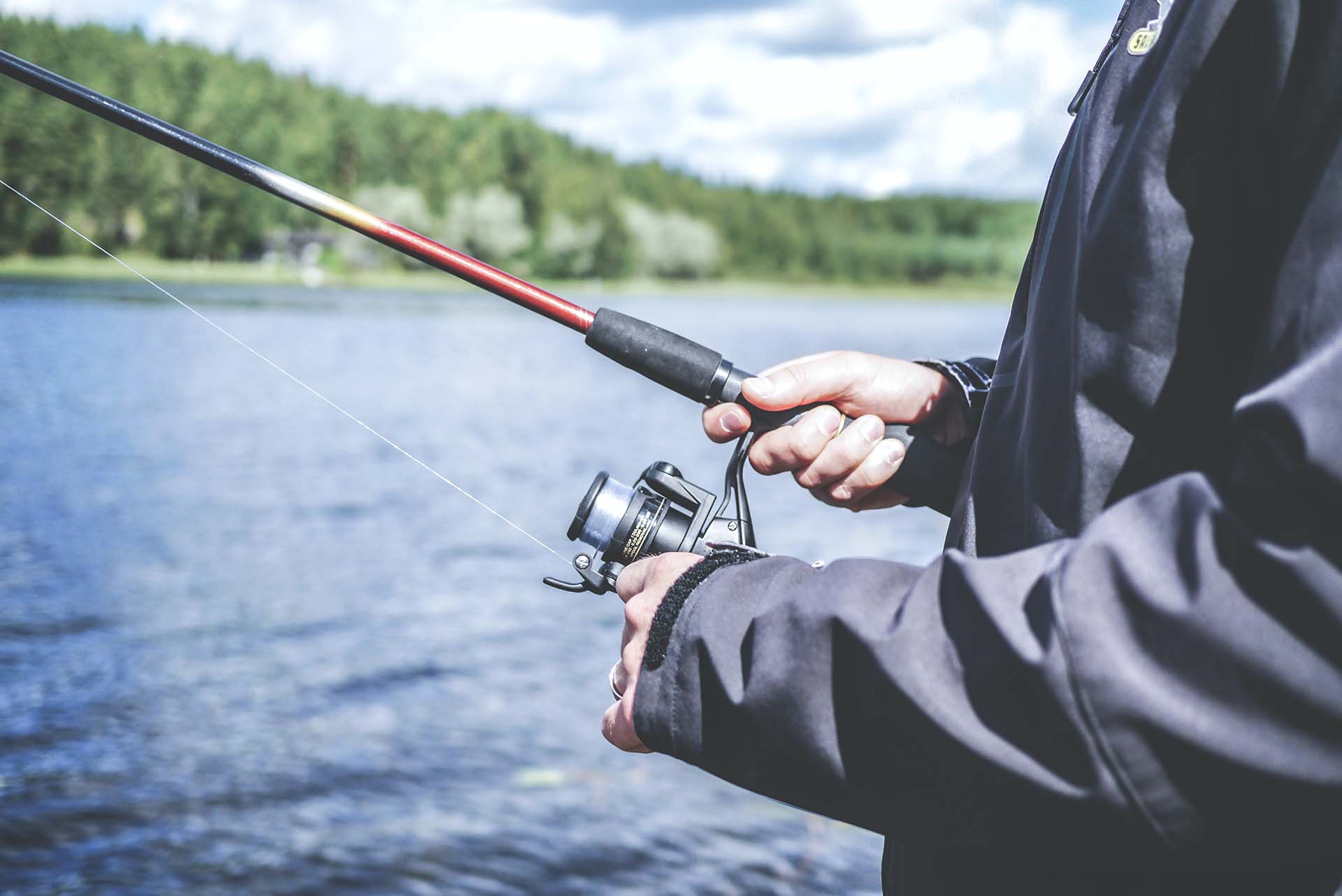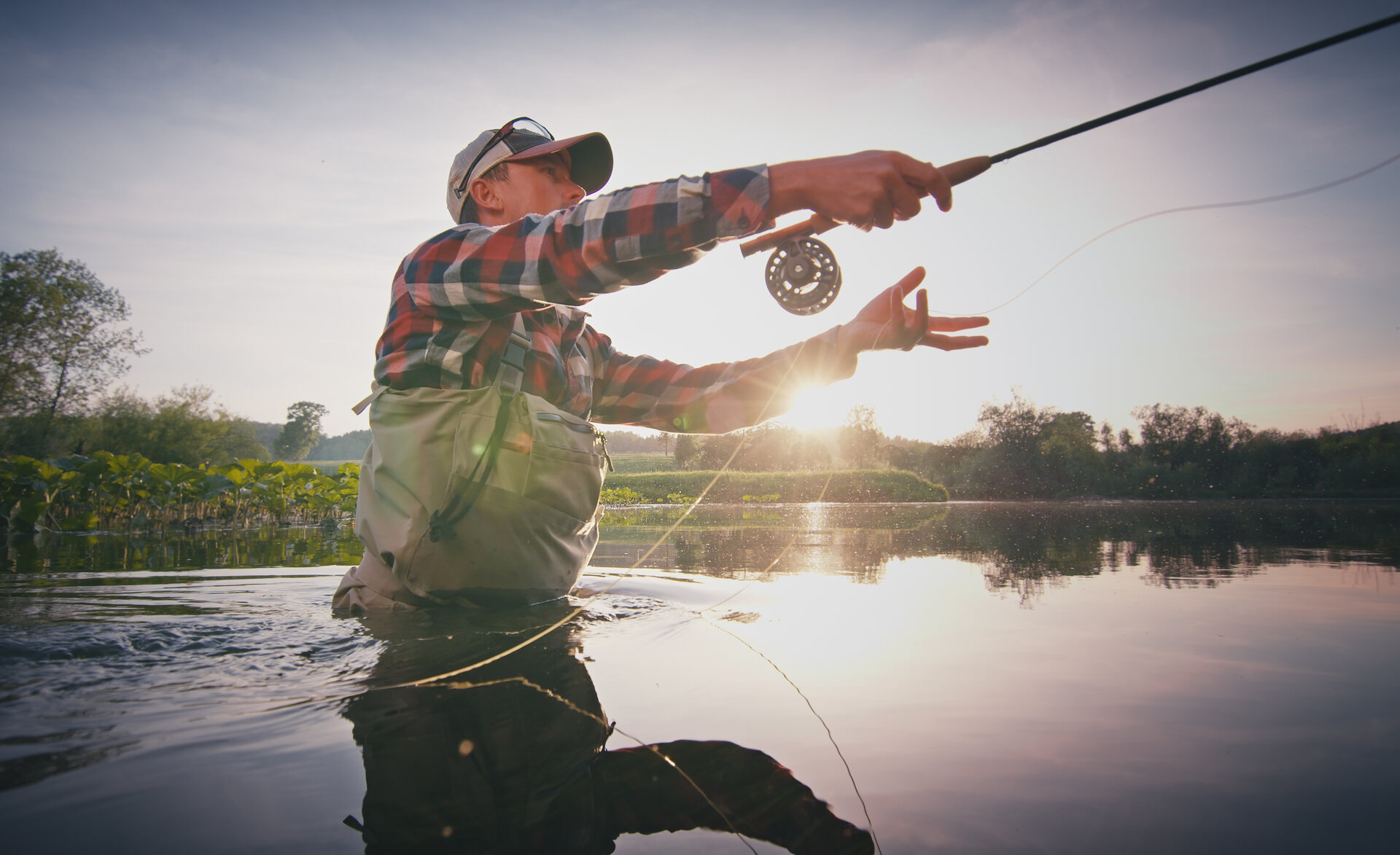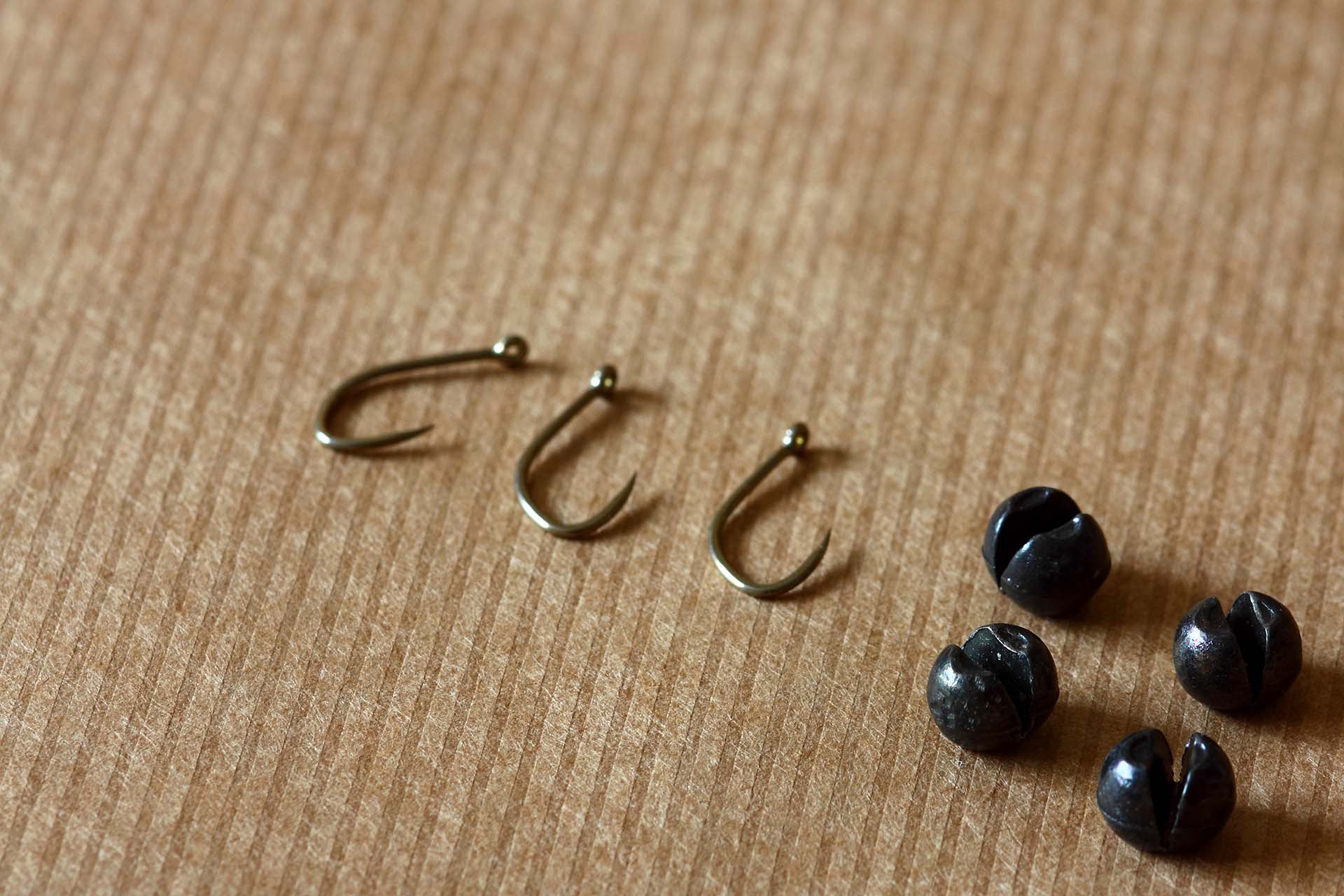Nestled between the art of casting and the whisper of the waters, learning how to fly fish for trout in a river, lake, or stream proposes an exciting challenge. It’s a world where skill, patience, and intuition converge, opening doors to the habitats where these fascinating creatures flourish. Let’s uncover the nuances behind this delicate technique that’ll surely bring in plenty of rewards.
A Brief Overlook of How to Fly Fish for Trout
Fly fishing for trout can be done either by nymphing or using dry flies. No matter which technique you end up using, it’s all about precise equipment selection, understanding their behavior, adapting to seasons, and perfecting the drift.
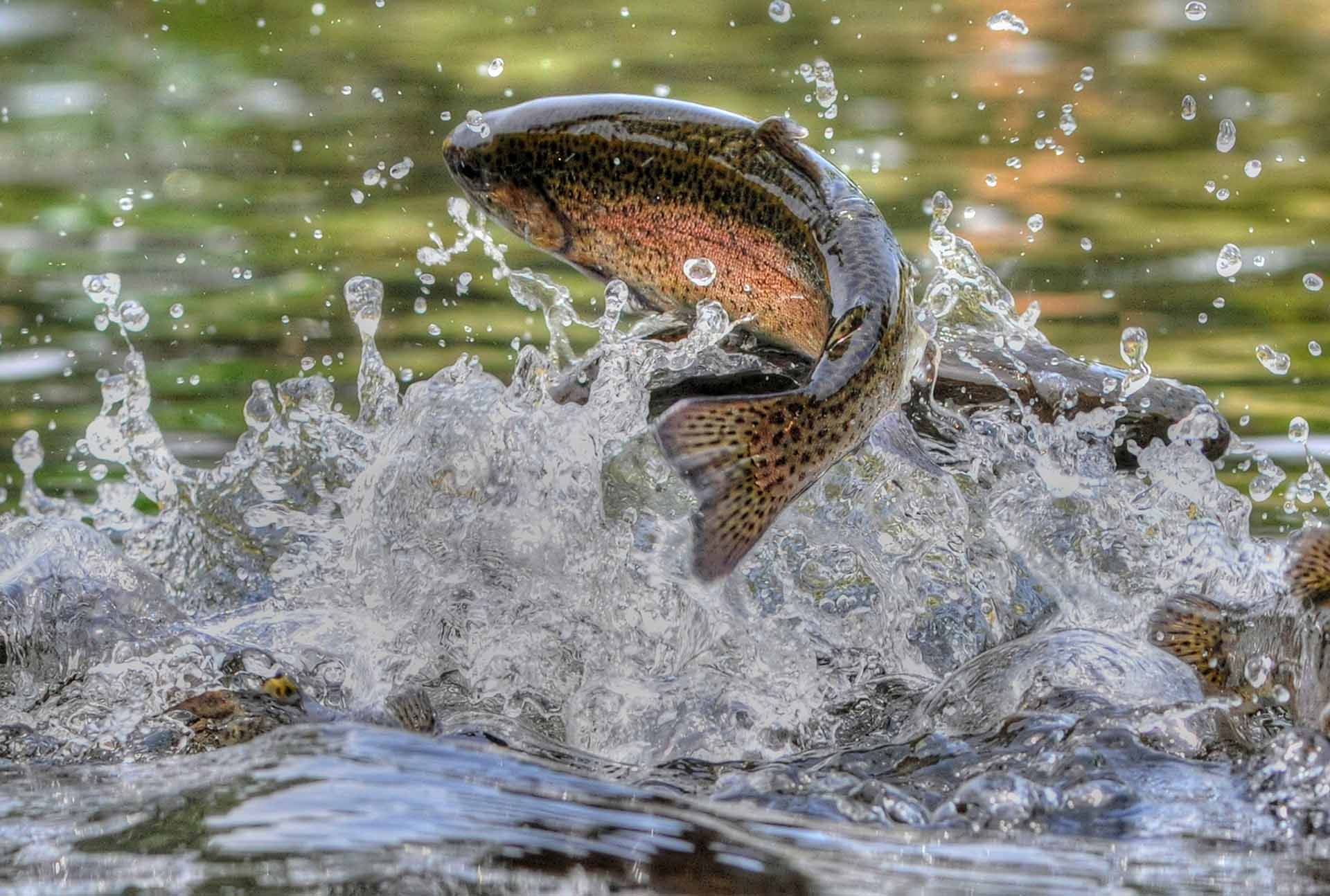
Tip #1: Choosing the Right Equipment
The foundation of a successful hunt for this species lies in the chosen equipment. It’s best to go for a 9-foot fishing rod, ideally a 5 or 6-weight, combined with a suitable reel. As the weight of the fly line you’ll use depends on the rod you get, I’d recommend getting the main gear first and then following up with the appropriate lines.
The RIO Elite Fly Line, known for its balanced performance, emerges as a favored companion. However, because of trout’s discerning eyes, you’ll need to expand this setup with both leader and tippet. Leaders longer than 9 feet and thin tippets are usually the way to go, especially when it comes to casting in strong currents.
Specific Gear Recommendations for Trout
The quest to unveil the perfect gear setup involves a lot of mixing and matching. Luckily, there are plenty of rod and reel combos tailored for the nuances of landing this fish species. For beginner anglers, I’d recommend the Redington Crosswater Combo, as it’s easy to assemble and pretty versatile. Those that already tried out their luck with this fishing technique should check out the Echo Fly Fishing Kit.
Tip #2: Learning to Read the Water
Learning how to fly fish for trout in a lake or river requires an understanding of the aquatic terrains this fish species usually dwell in. These creatures thrive in cooler freshwater environments, where the water, rich in oxygen, supports their vitality. Therefore, forested areas along rivers and streams are usually a good place to start.
Trout’s behavior is a dance of depth and surface – residing and feeding in the deeper aquatic realms, while occasionally gracing the shallows to look for food. Because of that, understanding their feeding patterns becomes crucial for reading the water and figuring out the best place to cast your line.
Tip #3: Mastering Basic Casting Techniques
Both nymph fishing and using a dry fly are effective methods for landing the elusive trout, yet each of these angling styles requires a specialized touch. Speed in response, paired with precision in the cast, is the golden ticket to success.
While a quick reaction to subtle indicators of underwater activity is important, it must be coupled with absolute precision in casting. A deviation of mere inches can transition an angler from the thrill of a hook-up to the silent drift of a missed opportunity.
Common Casting Mistakes and Their Fixes
Mistakes are always stepping stones when it comes to mastering any fishing technique. However, it’s good to know some common errors and how to avoid them:
- Mistimed casting – it’s important to perfect the timing between the forward and backward cast to avoid delayed releases,
- Inadequate line control – maintaining the needed line tension and slack can enhance control and precision in casting,
- Overpowering the cast – a focus on controlled, measured power application can help to avoid imprecision.
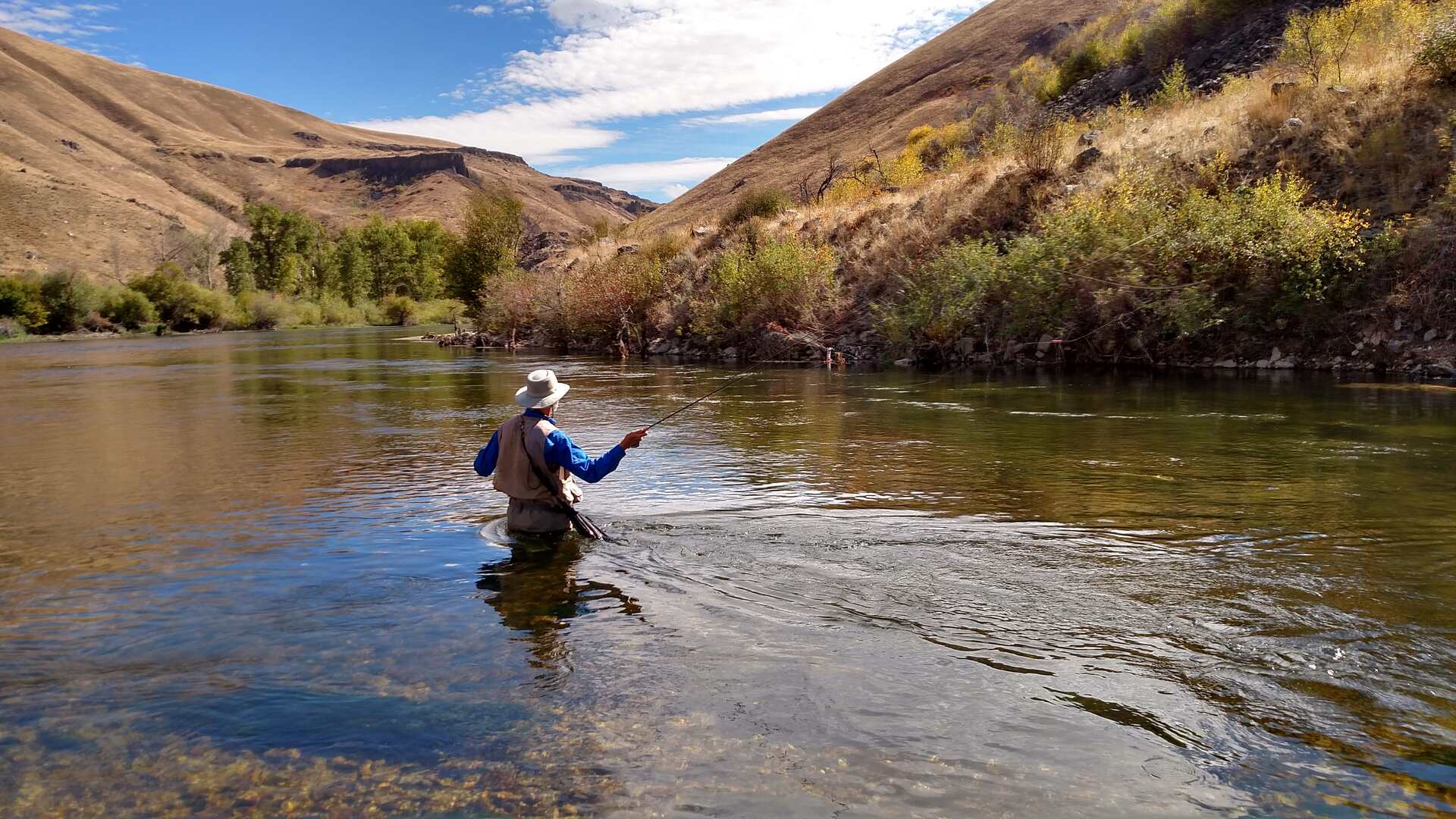
Tip #4: Matching the Hatch
Trout, with their discerning tendencies, respond to the intricate details of the lures presented to them. This rings true for both nymphing and using dry flies. The essence lies in mirroring the size and shape of the local insects that are active during the season of the year you’re fishing. While bright colors can be of great help in setting up the fish hook, sticking to muted hues like black is better for enticing trout with an authentic allure.
Tip #5: Adapting to Different Seasons
The art of landing this elusive species is an ever-evolving dance that sways with the changing seasons. While it all comes down to one simple fact – that this species prefers colder rivers and streams, it’s also important to better understand the seasonal patterns of this fascinating fish species.
How Trout Behavior Changes With the Seasons
Here’s a brief overview of how the changing seasons affect your target:
- Spring – brings higher levels and cooler waters, so you might find a few of these creatures in shallow streams, where the waters warm faster,
- Summer – during the warmest months, it’s best to go for expeditions early or later in the day, and you can even try out your luck with some nighttime fishing,
- Fall – it’s the best season to target these fish, as they are feeding aggressively during this pre-spawning period,
- Winter – even amidst the chill they venture to feed, so the most willing anglers can seize the opportunity.
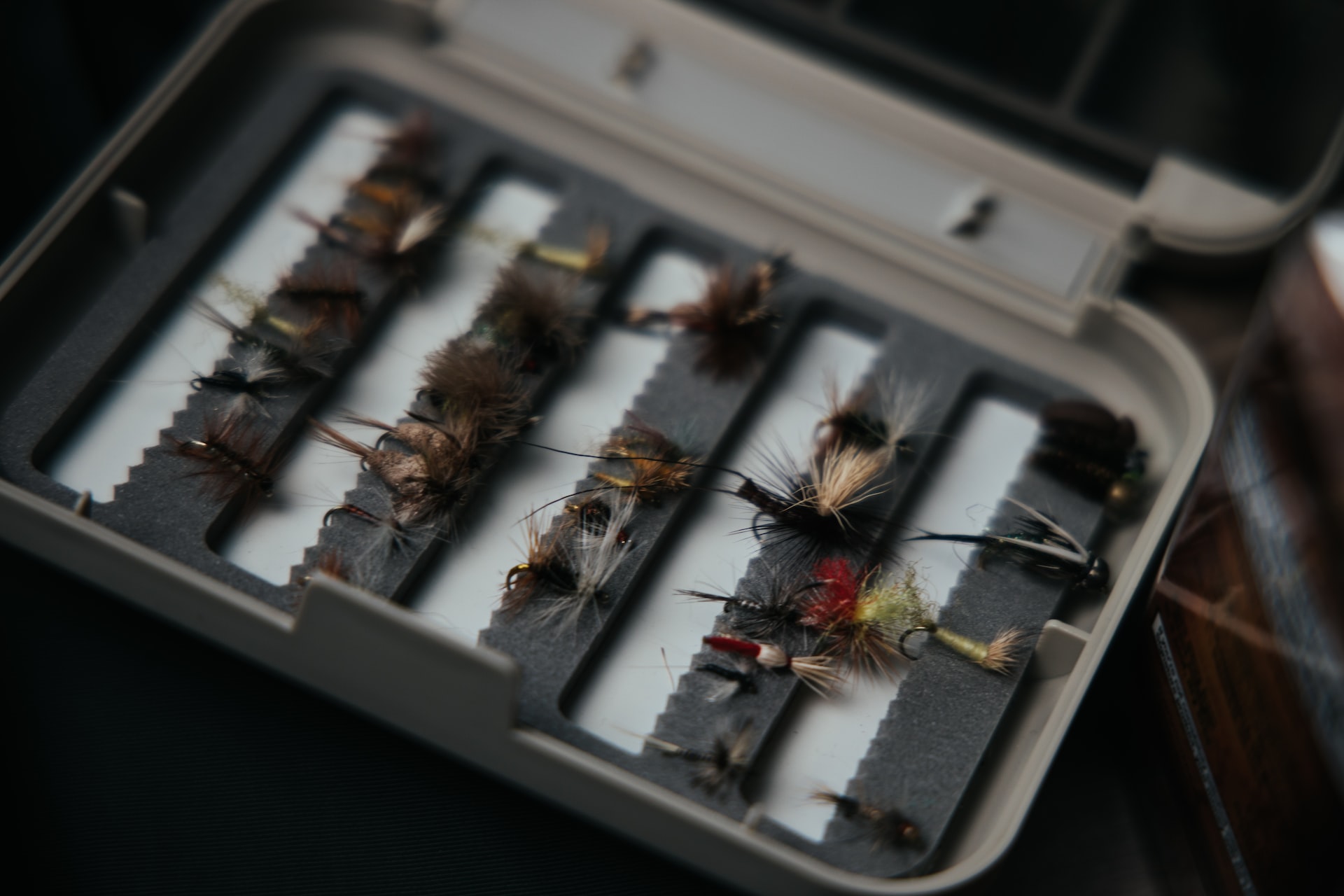
Tip #6: Perfecting the Drift
When it comes to learning how to fly fish a river for trout, achieving a natural drift is crucial. This means that the dry fly you’re using should naturally float on the surface of the river or stream you’re casting in. It’s all about mirroring nature’s effortless dance, making the fly appear as an intrinsic part of the aquatic landscape.
Use Techniques Like Mending to Achieve the Desired Drift
Mending, which means positioning the line on the moving current, plays a crucial role in perfecting the drift. It’s about timing – a well-executed mend upstream and downstream ensures the lure drifts naturally for an extended period, unaffected by the drag induced by water currents.
Tip #7: Being Stealthy and Approaching With Caution
As already discussed, this species is known to be easily spooked. These graceful creatures are alert and sensitive to their surroundings, making stealth and caution angler’s allies. To bridge the gap between the silent watcher and the anticipated catch, every step, every ripple, and every cast must echo the silent, unobtrusive rhythms of nature.
Tips for Not Spooking the Fish
Here are a few tips that will help you become a silent part of the aquatic landscape:
- Move slowly and take each step with caution to avoid creating unnecessary disturbances in the water,
- Wearing clothing with natural hues can be of great help in staying unnoticed,
- Use the surrounding vegetation or natural covers to conceal your presence,
- Be mindful of your shadow, ensuring it doesn’t cast over the water,
- Cast your line with precision and softness to prevent loud splashes.
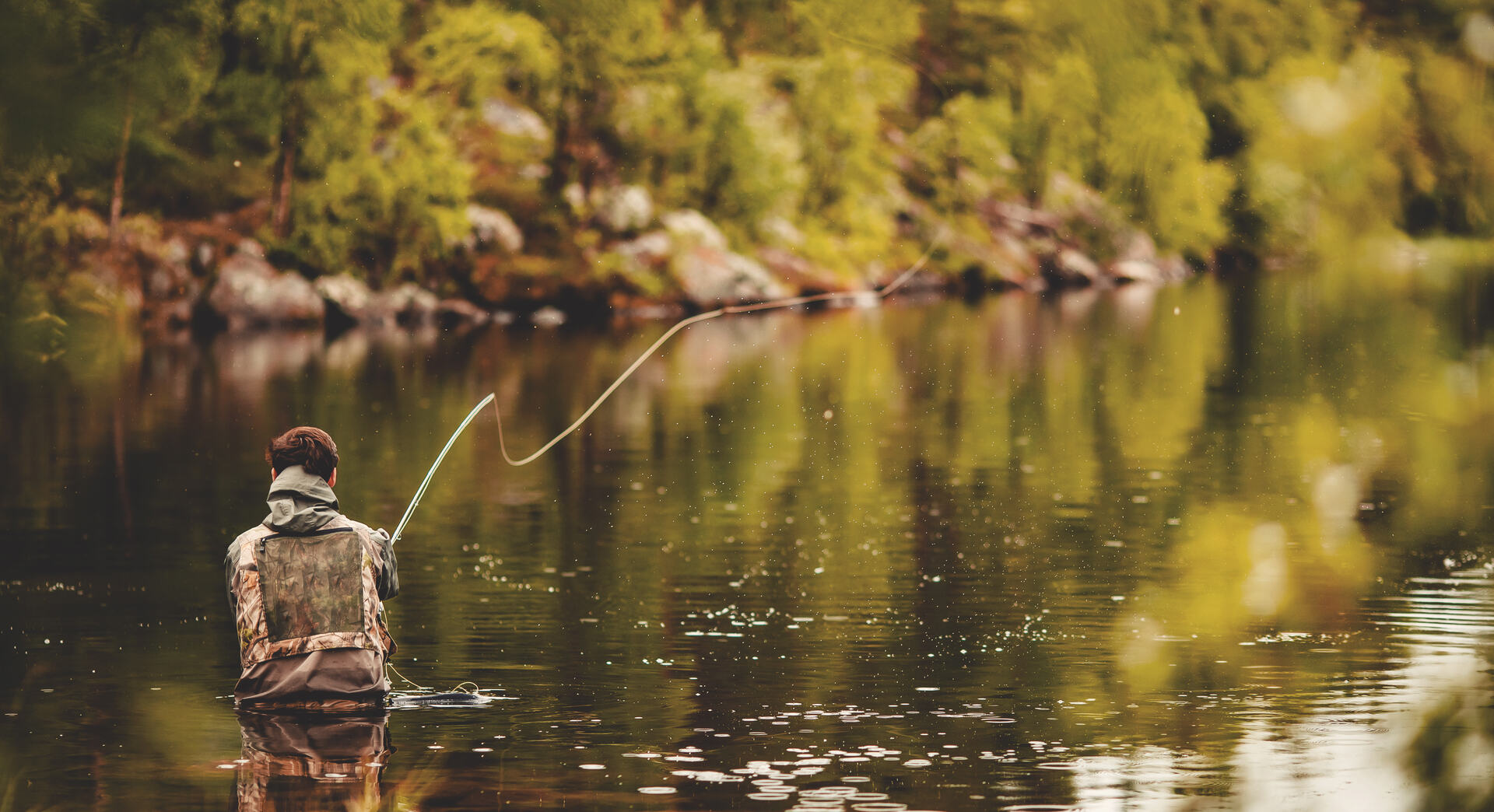
Tip #8: Practicing Catch and Release
Preserving the intricate balance of aquatic ecosystems is as integral to angling as the skill of casting. Ethical practices like catch and release underscore the delicate dance between the thrill of the catch and the respect for nature’s bounty. Moreover, it will also help you hone your skills, all while doing your part in conserving fish populations.
How to Handle and Release Trout Safely
The art of catch and release is a delicate process, so here are some tips for handling and releasing trout in the safest way possible:
- Always wet your hands before handling the fish to protect their slime coat,
- Handle your catch gently, avoiding any tight grips that can cause injury,
- Use barbless hooks, as they are easier to remove, reducing stress and injury to the fish,
- Make sure to minimize the time the fish spends out of water to reduce stress,
- If needed, hold the fish gently in the water, allowing it to revive before release.

Tip #9: Keeping a Fishing Journal
Documenting each expedition in a special fishing journal can be a goldmine of insights and learning. By recording your experiences and observations, you can create a reservoir of knowledge that can, in turn, be used to refine strategies and enhance skills. Trust me – this handy record will prove invaluable within a few outings.
Tip #10: Connecting With the Community
Besides keeping a journal, it’s a good idea to also join local fishing clubs or delve into online forums. These are spaces where experiences, insights, and the silent tales of the waters are shared. There’s plenty of wisdom to uncover, and you might even learn some interesting angling slang on the way.
Casting the Final Line and Reflecting on the Journey
From choosing the right gear to understanding the seasonal patterns of our target, we’ve sure covered a lot of ground. Each tip and trick you’ve learned here and the insights you have yet to learn out on the water are steps toward mastery. So, get out there and reach those enigmatic depths we are ever drawn to explore. Happy fishing!
FAQ
What’s the Best Time of Day to Fish for Trout?
Early morning and late evening are often the most productive times. These periods offer cooler temperatures and increased trout activity due to lower light conditions.
Can I Use Spinning Gear for Trout Fishing?
Absolutely, spinning gear can be effective for catching trout. A high-quality spinning reel with a suitable fishing rod can do the trick. Also, make sure to choose the appropriate lure and line weight for optimal results.
How Do I Determine the Right Fly Pattern to Use?
Observe the insects around and on the water to choose a similar fly pattern. The goal is to mimic the natural food sources that trout are feeding on at that time, as this will help create an authentic presentation.
What Are Some Safety Precautions When Wading in Rivers?
Always wear a quality wading belt and use a wading staff for stability. Stay aware of water levels and currents at all times to ensure you’re wading safely.
How Can I Locate Trout in a Stream or River?
Look for structures like rocks, fallen trees, or changes in water depth and speed. This species often stays near these areas for protection and easy access to food.

